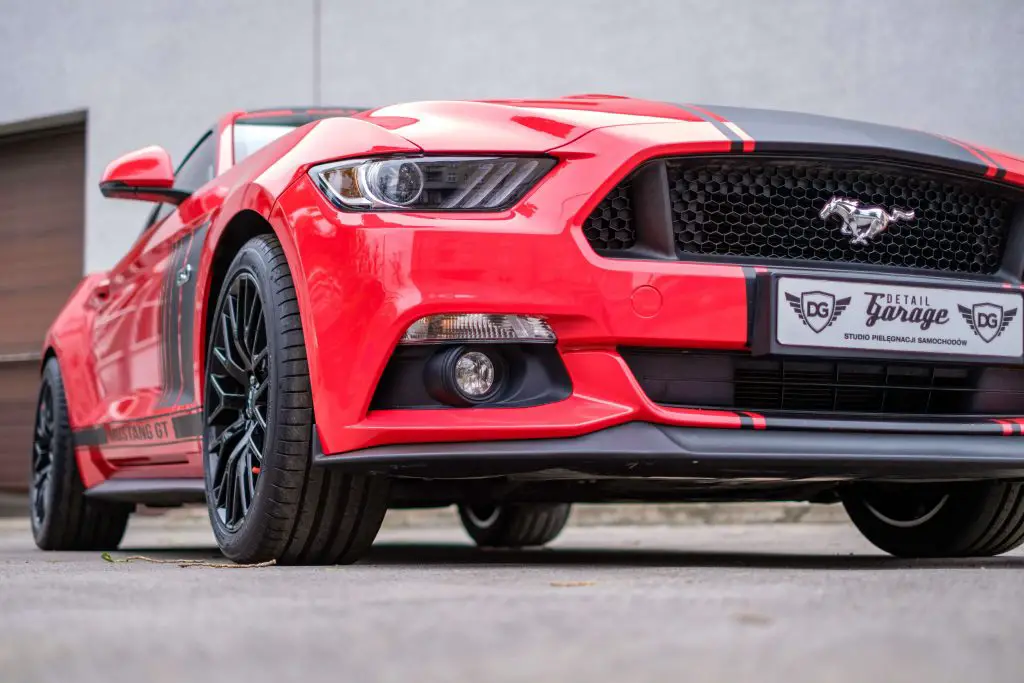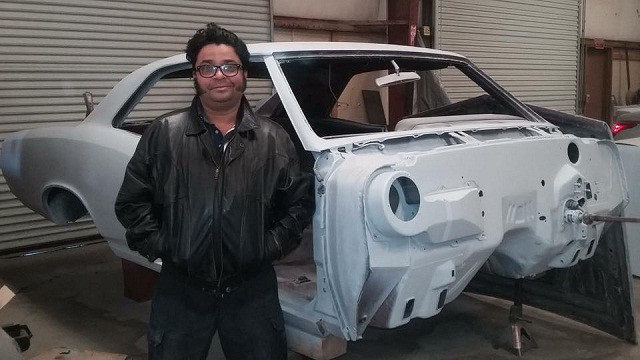Last Updated on December 17, 2023 by Leepu Da Maxim
Why Do Mustangs Lose Control? Mustangs have a lot of power, and the back ends of the cars may fishtail while accelerating, especially on slippery terrain. They’re also quite front-heavy, which exacerbates the issues. You may lose control and crash if you don’t drive carefully.
Key Takeaways
- Driving too fast is one of the most common reasons Ford mustangs lose control
- Uneven road surfaces, wet and icy road condition make it very difficult to control vehicles like Ford Mustung
- Mustang lacks body control and it is another important reason most mustangs lose controles
- The brakes on the Mustang are powerful, but their response time is a bit high’ this is why it is difficult to control a overspeed mustang
Despite the relatively wide 19-inch alloy wheels, the vehicle responds with fluidity and stable ride quality. It’s a reasonably easy car to drive rapidly, with consistent and natural-feeling steering weight and a decent balance. Unfortunately, the steering provides little genuine input, which leads to considerable second-guessing when nearing the chassis’ limitations.
However, the Mustang lacks body control – the dampers struggle to maintain track of the car’s mass at times, making it impossible to determine where the weight is inside the chassis with confidence.
Additionally, there is weight, as the Mustang feels every gram of its 1800kg+ mass. You wouldn’t notice on the Mustang’s native American highways, but on the broken B-roads standard across the UK, the Ford feels a touch out of its depth – a little agitated and cumbersome. The body swings laterally, wobbling on its suspension as though there were a different chassis below, despite the 21st-century back wheel.
Ride and Handling of the Ford Mustang
However, recent experience with a Mustang outfitted with a Koni Sport suspension setup has revealed that only minor adjustments are required to unlock the car’s full potential. The ‘Stang is more grounded and exploitable with better body control and a lower ride height without sacrificing the excellent ride quality.
The EcoBoost helps enhance turn-in and decrease body roll by removing some weight from the nose (the car is 65kg lighter overall). It doesn’t have as much throttle control as the V8, and it has the same dampening constraints as its more powerful predecessor.
The brakes on the Mustang are powerful, but their response time is lacking. Heel-and-toe downshifts are especially tough due to the vast distance between the brake and throttle pedals and the grabby first bite. It’s an issue that’s not quite as serious in the left-hand-drive automobile.
Despite these flaws, the Mustang is a blast to drive. It’s much easier to appreciate the car’s outstanding balance and rapid reflexes when driven below its limits and on smoother asphalt – and in the V8 GT guise, the engine and manual transmission contribute a lot to the experience.
Dunlop Pilot Sport Tourer tires, adjustable MagneRide dampers, a Torsen limited-slip differential, and the 5.2 flat-plane crank V8 are all standard on the Shelby GT350. Although the most thrilling Mustang available, the GT350 lacks actual front-end sensation. The vast, 295-section front tires provide traction, but you won’t notice it.
The Shelby is relatively clunky and aloof at seven-tenths. You can’t determine if the tires are keying into the road surface on the first lock application, and you don’t have the confidence to get on the power early.
You can feel the vehicle slide around beneath you as you get braver with the Shelby and start throwing the front into bends. It’s thrilling, but it’s also a physically demanding experience. The GT350R has the same 526bhp V8 and magnetorheological dampers as the regular Shelby. Still, it also has a new aluminum front hub; rear coil springs are wound in the opposite direction.
Why Does the Ford Mustang Lose Control?
A large number of criteria are tested to ensure that your vehicle has a firm grip; nevertheless, only a few are replacement components; the vast majority are tied to the vehicle’s production; we’ll look at those that might affect your handling below:
- Tires with excessive wear: Tire rubber is critical to your vehicle’s good handling. If your tires need replacement, you risk experiencing wet handling issues first and when you approach the “rope,” even on dry roads.
- Worn-out shock absorbers: Assuming that your shock absorbers are not in good working order, your vehicle will no longer be able to react correctly to the roughness that you will encounter on your journey, and you will experience a sensation of floating in the turns, causing the masses on the vehicle to be unevenly distributed and shifting its center of gravity. On curves, you risk sliding.
- Bad parallelism: If your parallelism is not ideal, your contact surface with the ground will get limited due to an angle of your wheels that is either too open or too closed, resulting in grip issues.
- A steering issue: Finally, all of the components of your steering system must be in good functioning condition for you to have a decent grip. When you have steering troubles, it’s usually because your stabilizer bar, quiet blocks, or worn-out steering triangles are to blame. When you activate a turn, you will experience a longer wait.

What Makes the Mustang So Dangerous?
“Short wheelbase, straight axle (typically open), bad weight distribution, poor hp/ltr (older stuff), terrible brakes… but gosh, they sound great.” The collisions might result from this, mixed with drivers wanting to satisfy an enthusiastic crowd. It might also be a combination of bad luck and inattentive driving.
Is the Mustang a Drift Machine?
Any car can slide with enough determination. However, certain features help a vehicle slide more than others. The Mustang has all four characteristics, making it an excellent drift vehicle. Ford Mustangs built between 1994 and 2004, known as SN95 Mustangs, are particularly suitable for drifting.
Can the Mustang Drift?
Many people would dismiss muscle vehicles as a viable option for drifting; however, this isn’t accurate. The most popular drift vehicles are rear-wheel-drive solid chassis. Mustangs are precisely that, and this platform makes it simpler to lose rear tire grip while attempting to drift.
Why are Mustangs Unable to Drift?
The quick explanation is that the Mustang is manufactured by Ford, a company with a long history of questionable actions. It’s not the automobile, not the “Mustang owner” demographic. It is a person who is conducting an out-of-control burnout, not drifting.
Are Mustangs Unsuitable for Rain?
They’re OK in the rain while driving. The car has decent weight distribution, and you can drive it for 100 plus on the interstate with no problems. These machines have a lot of low-end torque. Anything more than a gentle throttle tap in 1st will most likely break free all-season/stock tires in the rain.
Which Mustang is the Best?
The Mach-E Ford Mustang has the edge over the rest. The 2021 Ford Mustang Mach-E has excellent ratings in crash-test areas such as driver- and passenger-side small overlap front, moderate overlap front, side, roof strength, and head restraints to obtain the IIHS Top Safety Pick title.
How Reliable are Mustangs?
The dependability of the Ford Mustang is above average, with specific model years scoring higher than others. It has a 3.5 out of 5.0 rating, placing it 20th out of 24 midsize automobiles in its class.
References:
https://www.quora.com/Why-do-so-many-Mustangs-lose-control-and-crash-Is-it-more-of-the-drivers-fault
https://carbuzz.com/news/why-do-mustangs-always-seem-to-crash-at-cars-coffee-events

Hi, I’m Leepu Da Maxim, a dedicated car enthusiast with over 10 years of experience in this field, and I’m thrilled to share my passion and expertise with fellow car enthusiasts like you. My journey began in my hometown West Jordan, Utah, where my fascination with the mechanics and design of cars sparked at a young age. Over the years, this passion has evolved into a commitment to providing accurate, insightful, and engaging information about all things automotive through CarsAmazing.
